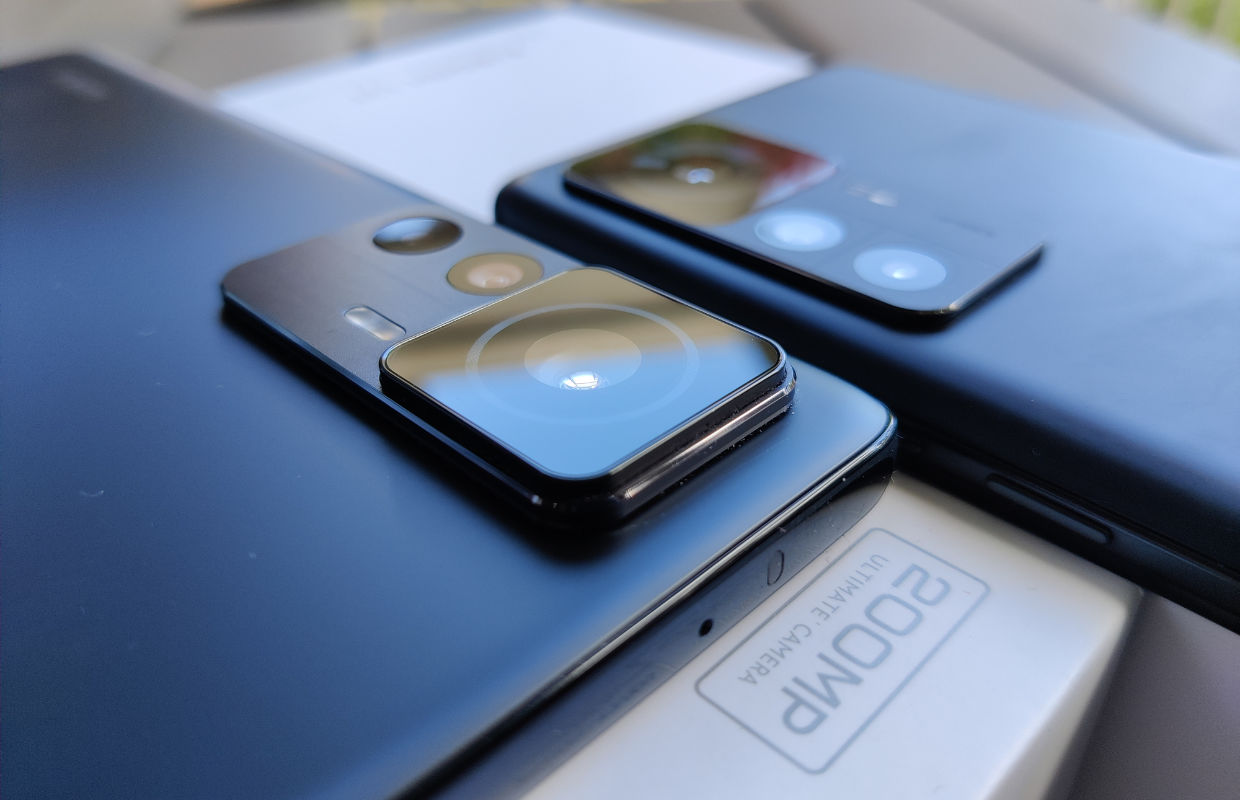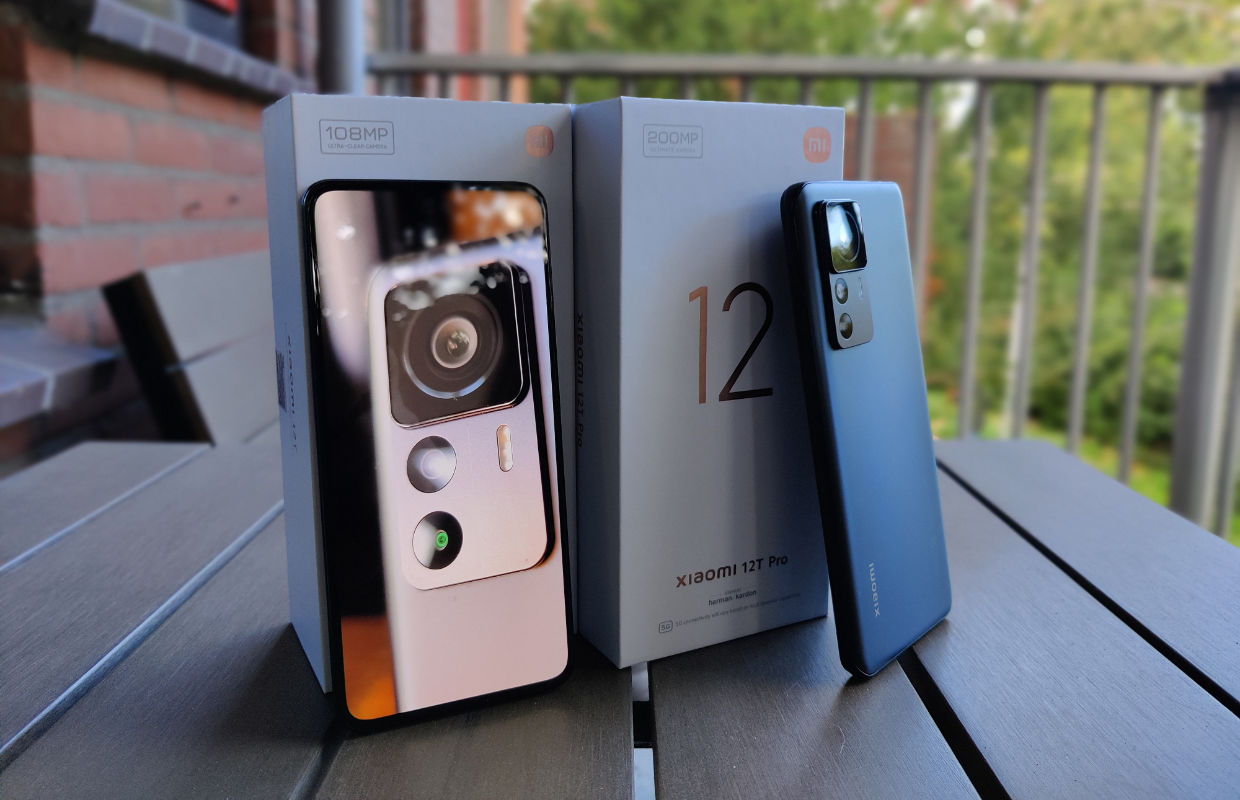Are you looking for a fast smartphone, but don't want to pay the absolute top price? Then read this review of the Xiaomi 12T (Pro). Maybe one of these two sub-toppers will be your new phone.
This Xiaomi 12T (Pro) review
There is certainly no shortage of high-end smartphones in Xiaomi 's collection . The company previously released the Xiaomi 12 and Xiaomi 12 Pro . In the home country of China, there was also the Xiaomi 12S Ultra with its large 1 inch camera sensor .
Unfortunately, you cannot buy the 12S Ultra in the Netherlands. Fortunately, the new Xiaomi 12T and 12T Pro, which we discuss in this article, do. These are a kind of alternative flagships that have fast hardware, but give up something in other areas. They are therefore cheaper than other premium phones. The regular 12T is available for 599 euros , while the 12T Pro costs 799 euros . This makes them slightly more expensive than their predecessors, the Xiaomi 11T and 11T Pro.
In this review, we mainly focus on the Xiaomi 12T Pro, which has a brand new 200 megapixel camera. Of course we also take the cheaper brother with us, to see what you hand in with that device.
Xiaomi 12T (Pro) review
- Design
- Screen
- Hardware
- Cameras
- Software
- Battery life
- Conclusion
Sleek design has few drawbacks
The Xiaomi 12T and 12T Pro are like two drops of water. Unlike their predecessors, the smartphones have a matte back. That looks neater and ensures that fingerprints are less likely to be left behind. You can choose from the colors black, silver and blue, which, due to the small sparkle, always look slightly different when the light changes.
Xiaomi has also made the bezel thinner at the bottom, so that the phones are now symmetrical. That is a big improvement and gives the phones a high-end appearance at first sight.
You will notice that they are not real top devices as soon as you pick them up. The frame is made of plastic, which is of course less strong than metal. As long as you don't keep your phone in your back pocket, and therefore run the risk of sitting on it, you won't notice it much. In addition, the 12T (202 grams) and 12T Pro (205 grams) are relatively light for such large smartphones. They also feel great in the hand.
We see the only difference between the devices on the back. The 12T has a 108 megapixel camera, which disappears in the (beautifully designed) camera island. The 200 megapixel sensor on the 12T Pro needs more space. The lens therefore protrudes a little further.
Overall, the look of the 12T (Pro) is an improvement over the 11T (Pro). The design is not very striking, but it also has few drawbacks.
Flat OLED screens are very nice
The 12T and 12T Pro have a 6.67-inch OLED screen with a resolution of 2712 by 1220 pixels. That is slightly higher than before, because the 11T (Pro) had to make do with 2400 by 1080 pixels. Nice for Xiaomi's marketing department, but you don't notice that much in practice. The screen was already sharp last year and still is.
It concerns flat displays, where Xiaomi often opts for curved screen edges with other high-end smartphones. Your preference is of course very personal. In any case, we have little to criticize about the screen of the 12T (Pro). Thanks to the OLED panel, the colors splash off, the viewing angles are fine and the contrast is very high. The brightness of 500 nits (900 at peak times) is not very high on paper, but we could still read the screen in the autumn sun. It may be a bit more difficult on a summer day.
120Hz
It also comes with an adaptive 120Hz screen, which automatically adjusts the refresh rate according to what you're doing. If you scroll through a website, the images are indeed refreshed 120 times per second. That looks very smooth. In less demanding situations, the device automatically switches back to 30, 60 or 90Hz. That saves the battery and luckily you don't notice it. We didn't see any hiccups during testing.
The screen of our 12T was slightly yellower with white backgrounds than that of the 12T Pro. We don't know why, because the panels should be the same. It may simply be a natural variation in the production process.
The fingerprint scanner is located under the display and works both quickly and accurately. A layer of Gorilla Glass 5 should protect you against scratches. Incidentally, there is already a screen protector on the screen from the factory, which is very nice. Xiaomi also supplies a transparent case with both devices.
Fast and even faster
One of the biggest differences between the 12T and 12T Pro is the processor. The 12T runs on a MediaTek Dimensity 8100 Ultra chip, while the 12T Pro has a Snapdragon 8 Plus Gen 1 on board.
The latter is the fastest processor at the moment. In Geekbench 5, an app that measures the performance of smartphones, it achieves an approximately 40 percent higher single core score than the MediaTek. This is especially important if you play a lot. The multi-core score, important if you do a lot of multitasking, is only 10 percent higher.
Xiaomi 12T Review
MediaTek's 8100 Ultra is therefore certainly not a slow chip. In everyday use, we had to do our best to spot differences. That only works if you scroll through relatively heavy apps or websites. The 12T Pro always knows how to load it smoothly, while the 12T sometimes needs a few tenths of a second extra. It's certainly not dramatic. Most people can handle the 12T just fine.
Even when playing games, the differences are limited at first glance. We did notice that the 12T heats up a bit faster. The processor simply has to work harder to conjure up the images on the screen.
There is also some difference between the stereo speakers. Those of the 12T Pro are tuned by the well-known audio company Harman Kardon, those of the 12T are not. If you listen to them side by side, the Pro does indeed sound slightly more dynamic. However, it is very subtle. Both smartphones can go through with it, but lower tones are almost completely absent.
Pixels only tell half the story
The big star in the marketing around the Xiaomi 12T Pro is of course the 200 megapixel main camera. It is brand new and can also be found in the Motorola Edge 30 Ultra . It is a fairly large sensor that, according to Xiaomi, should provide excellent photos.
If you use the automatic settings, the 12T Pro uses pixel binning . 16 pixels are compressed into one, so that you are left with a photo of 12.5 megapixels. It should look better than an ordinary 12.5 megapixel snapshot, because it contains extra information.
There is little wrong with Xiaomi's update policy. You get three major upgrades, to Android 13 to 15. In addition, you can expect four years of security patches that protect your device against hackers. Samsung and Google themselves are doing a little better, but you won't hear us complaining.
Battery 12T Pro lasts a very long time
There is a 5000 mAh battery in the 12T (Pro). That's average for a high-end smartphone of this size. However, the Snapdragon 8 Plus Gen 1 is a pretty economical chip, so the battery life of the 12T Pro turns out to be excellent.
A day and a half is no problem at all and with moderate use, even two full days should be possible. The 12T does slightly worse, but certainly makes it to the end of the day.
Xiaomi 12T Review
Xiaomi provides a lightning-fast 120 Watt charger with both devices. It only needs about 25 minutes to fill your empty device completely again. If you plug it in in the morning before you have breakfast and shower, it's at 100 percent when you go out the door. That is a wonderful luxury, but unfortunately wireless charging is not an option. Certainly the Pro should have had this feature.
Conclusion Xiaomi 12T (Pro) review
As you have read in this review, the Xiaomi 12T and 12T Pro are fine smartphones. The design is nicer than that of their predecessors and the software is also better put together. Thanks to the fast hardware, they also work smoothly, charge very quickly and last a long time on a battery charge.
The areas in which Xiaomi has cut back are quite logical as far as we are concerned. The plastic frame does not bother you during normal use and we like to take the mediocre speakers for granted. With the cameras, Xiaomi has been guided a bit too much by marketing. The 200 megapixel lens often produces good and sharp pictures, but that comes at the expense of the other cameras. We would have preferred a 50 megapixel main camera and a better wide-angle lens.
The key question, of course, is whether you should go for the 12T or the 12T Pro. The Pro feels slightly more luxurious due to the faster processor, the new camera and the longer battery life. If you can spare the money, we would recommend that device. Do you have a budget of 600 euros? Then you also do a great buy with the 12T.
Thanks For You Reading The Post
We are very happy for you to come to our site. Our Website Domain name
https://androidvillaz.blogspot.com/.
 Main Page
Main Page



Comments